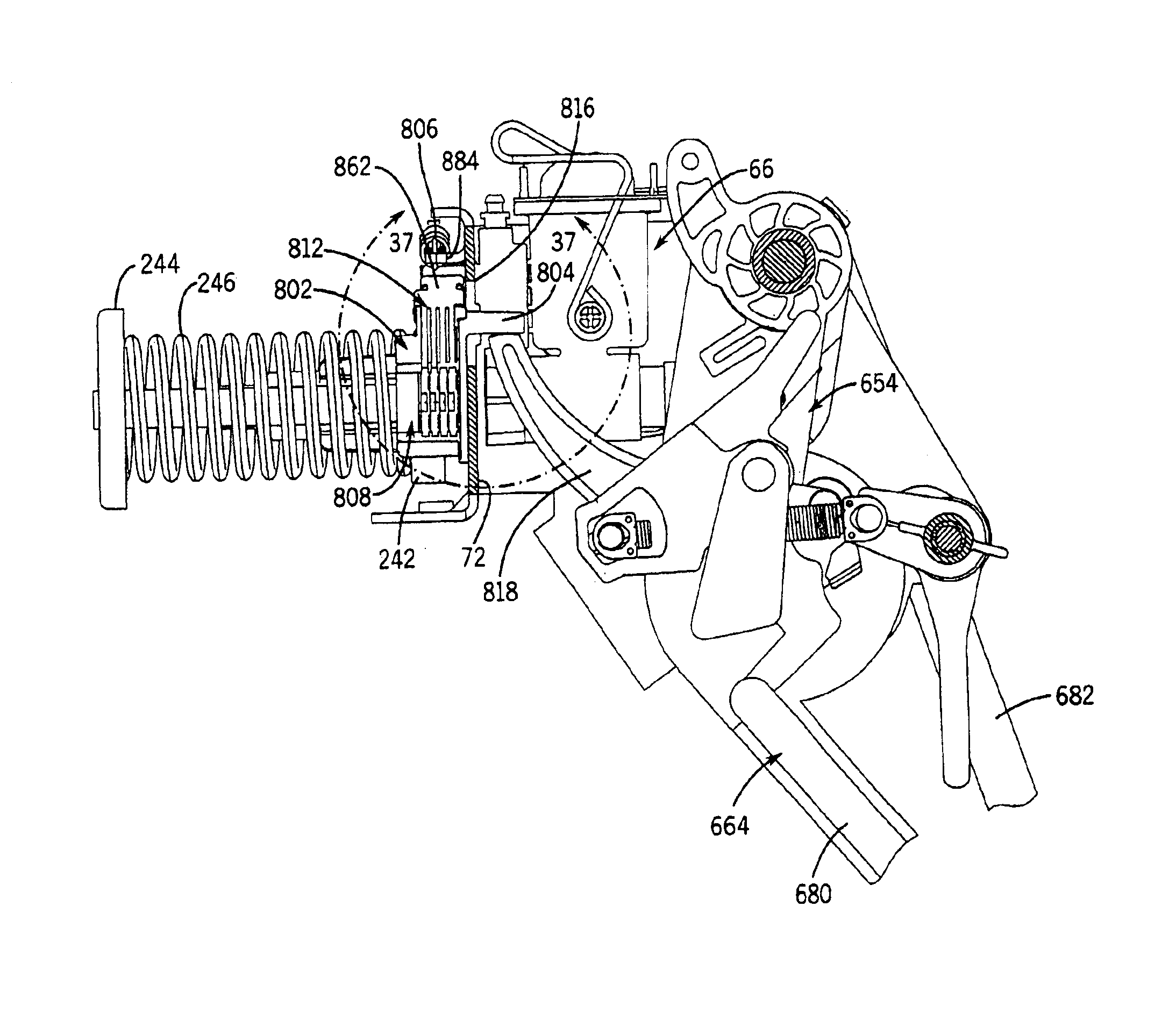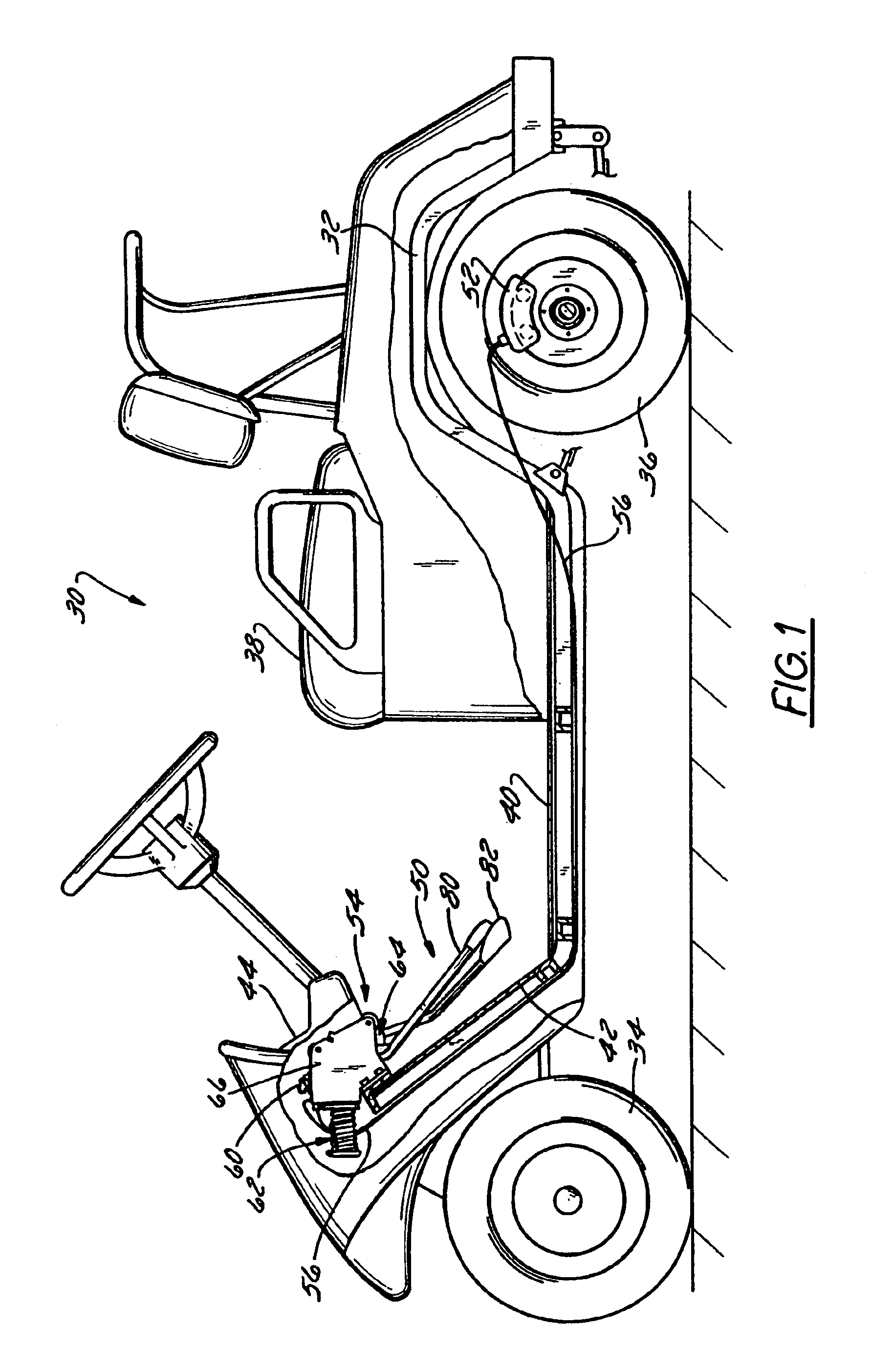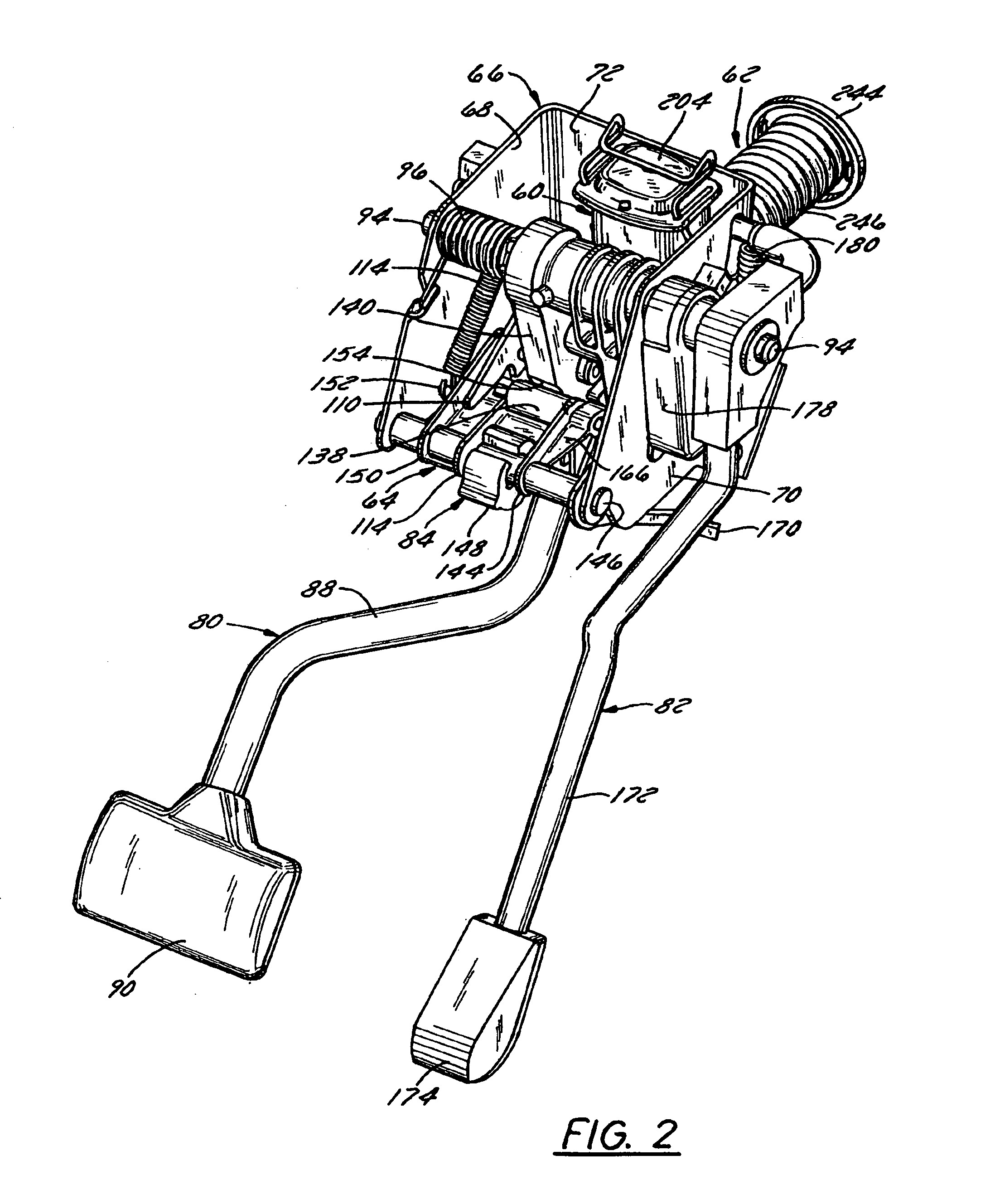Brake system having boosted hydraulic accumulator
a technology of hydraulic accumulator and brake system, which is applied in the direction of brake cylinders, mechanical control devices, instruments, etc., can solve the problems of requiring a large force for mechanical brake systems to release brake pedals, affecting the service life of the system, and requiring high strength structural components to withstand continued service, so as to boost the magnitude of energy stored
- Summary
- Abstract
- Description
- Claims
- Application Information
AI Technical Summary
Benefits of technology
Problems solved by technology
Method used
Image
Examples
Embodiment Construction
1. Resume
[0060]Pursuant to a preferred embodiment of the invention, a hydraulic brake system is provided for a vehicle such as a golf car or the like that uses the same brakes and same brake pedal for both service braking and park and hold braking. The system additionally includes a hydraulic accumulator that stores much of the energy generated upon brake pedal depression. The stored energy can be used to maintain the brakes in their fully engaged state and to help return an applied brake pedal to its released position, in which case return fluid flow to the master cylinder is damped to avoid undesirable severe kickback of the brake pedal. A booster is provided to automatically boost the energy storage capacity of the accumulator during normal brake and hold cycles in order to provide sufficient energy accumulation to compensate for relatively severe pressure drops occurring, e.g., during prolonged periods of storage at decreasing temperatures.
2. System Overview
[0061]The invention, ...
PUM
 Login to View More
Login to View More Abstract
Description
Claims
Application Information
 Login to View More
Login to View More - R&D
- Intellectual Property
- Life Sciences
- Materials
- Tech Scout
- Unparalleled Data Quality
- Higher Quality Content
- 60% Fewer Hallucinations
Browse by: Latest US Patents, China's latest patents, Technical Efficacy Thesaurus, Application Domain, Technology Topic, Popular Technical Reports.
© 2025 PatSnap. All rights reserved.Legal|Privacy policy|Modern Slavery Act Transparency Statement|Sitemap|About US| Contact US: help@patsnap.com



